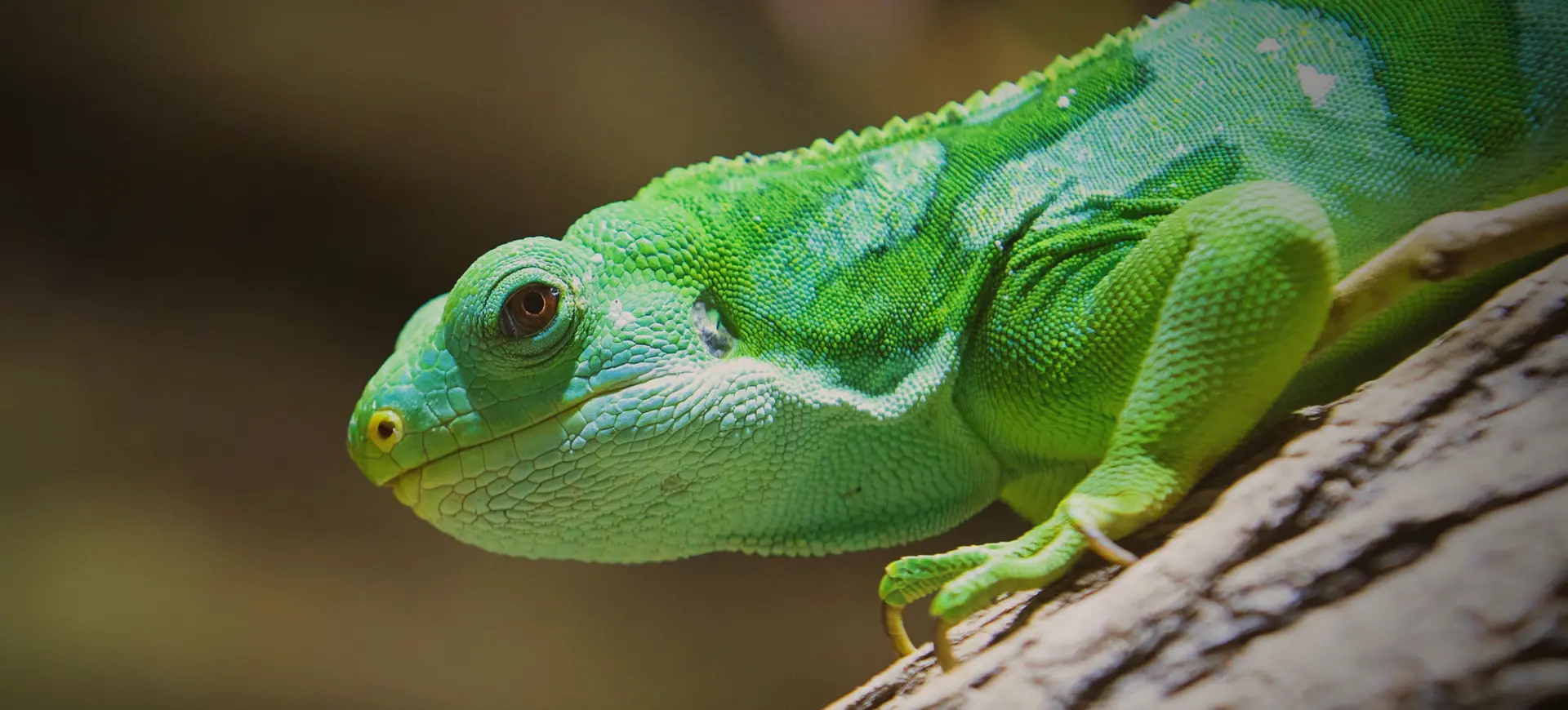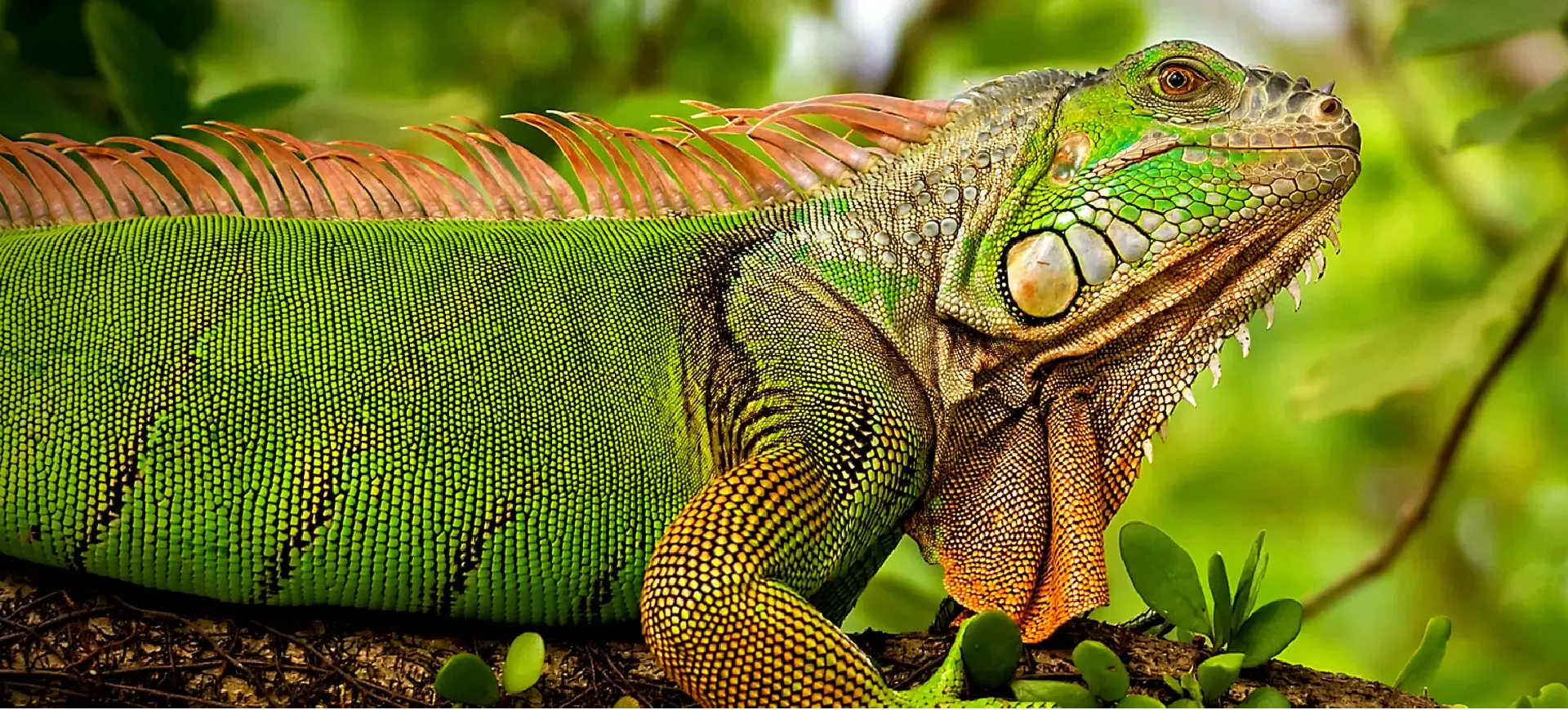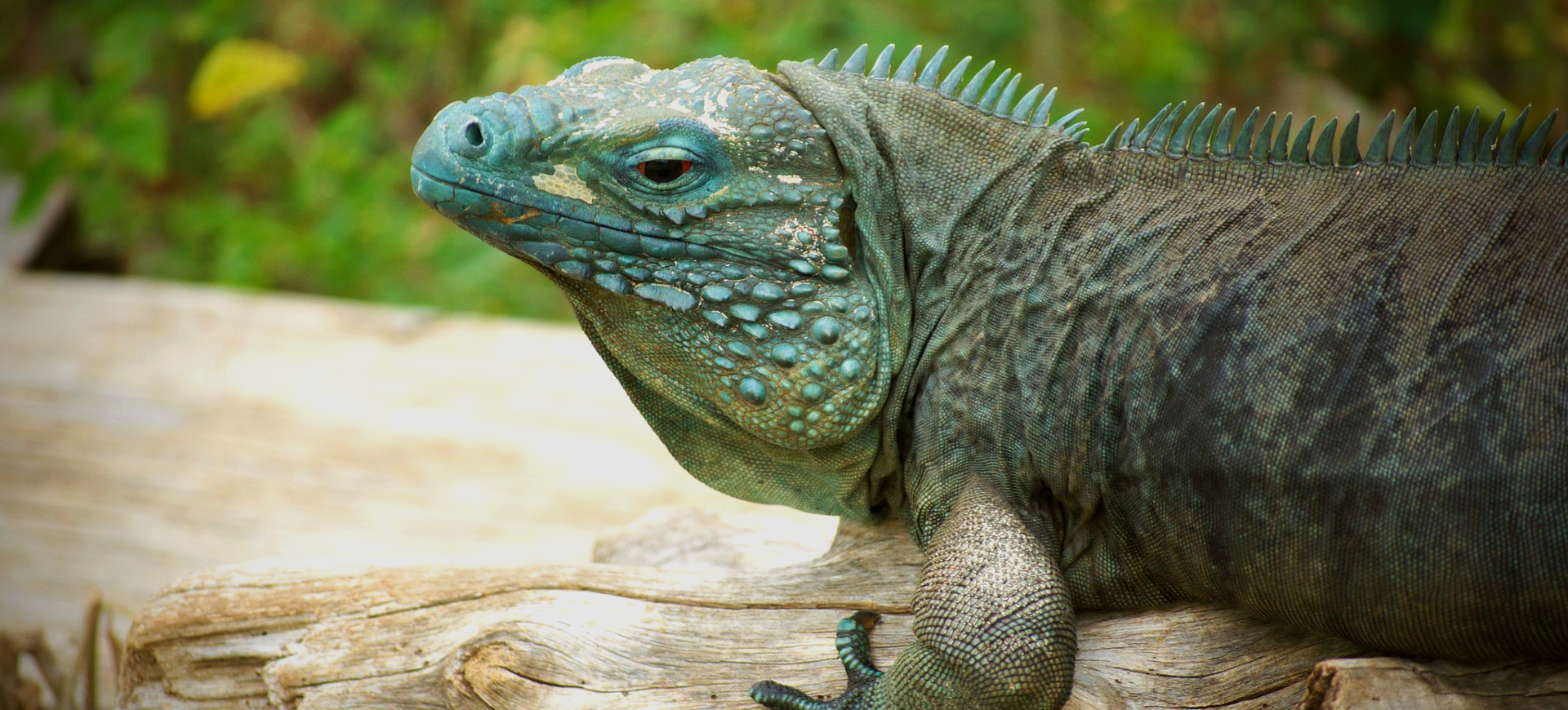Overview
The Utila Spiny-tailed Iguana, Ctenosaura bakeri, is a fascinating and critically endangered species found exclusively on the small island of Utila, off the coast of Honduras. This iguana is recognized for its distinctive black or dark gray coloration, which becomes more pronounced in males during the breeding season. It is one of the smaller members of the Ctenosaura genus, with adults typically reaching around 2 feet. The species is named for the ring of spiny scales running down the length of its tail, which provides a defensive mechanism against predators.
This reptile is primarily arboreal, spending a significant amount of its time in mangrove trees, basking and foraging for food. The Utila Spiny-tailed Iguana is an omnivore, feeding on a varied diet that includes leaves, flowers, fruits, and occasionally small animals like insects and crabs. Despite its small geographic range, this species exhibits a strong adaptability to varying microhabitats within its environment, from dry scrubland to lush mangroves. The iguana’s daily activity is primarily diurnal, with peak activity occurring in the morning and late afternoon.
Conservation concerns for the Utila Spiny-tailed Iguana are significant and pressing. Its limited distribution makes it particularly vulnerable to habitat loss, and the island of Utila is experiencing rapid development and increasing tourism, which threatens the iguana’s habitat. Additionally, predation by introduced species, illegal poaching for the pet trade, and local consumption are ongoing threats to its survival. Conservation initiatives focusing on habitat protection, local education, and research are critical for this species’ continued existence.
Taxonomy
Kingdom
Phylum
Class
Order
Family
Genus
Species
Type
Physical Description:
The Utila Spiny-tailed Iguana is a robust lizard with a distinctive spiny tail used defensively against predators. Adults typically exhibit a dark gray to black coloration, with males displaying more pronounced darkening during the breeding season. The body is muscular, agile, and well-suited for climbing and navigating the mangrove forests. Males are generally larger than females and have more pronounced spikes along their back and tail.
Their skin is rough with a granular texture, and they possess a row of enlarged, pointed scales along the dorsal side, giving them their characteristic ‘spiny-tailed’ appearance. The iguana’s head is blunt with a pronounced jaw, necessary for consuming a variety of plant materials. Their limbs are strong and clawed, enabling effective climbing. Despite their somewhat fierce appearance, these iguanas are generally shy and reclusive.

Lifespan: Wild: ~10 Years || Captivity: ~15 Years

Weight: Male: 0.88-1.32 lbs (400-600g) || Female: 0.66-1.1 lbs (300-500g)

Length: Male: 20-28 inches (50-70 cm) || Female: 16-24 inches (40-60 cm)

Top Speed: 21 mph (34 km/h)
Characteristic:
Native Habitat:
The Utila Spiny-tailed Iguana is endemic to the small Caribbean island of Utila, part of the Bay Islands of Honduras. Its habitat is primarily within the island’s mangrove forests and beach areas, although it can also be found in dry scrub areas and near human settlements. High humidity, moderate temperatures, and a mixture of salt and freshwater environments characterize the iguana’s natural habitat. The mangroves provide crucial shelter and food sources, while the sandy beaches are essential for nesting.
The iguana’s ability to thrive in various microhabitats within the island’s ecosystem demonstrates its adaptability. However, the limited range also makes the species particularly vulnerable to environmental changes and habitat destruction caused by human activities.
Climate Zones:
Biogeographical Realms:
Continents:
Countries:
Diet:
Diet & Feeding Habits:
The Utila Spiny-tailed Iguana is an omnivorous species, consuming a diet that includes a wide variety of plant materials such as leaves, flowers, and fruits, as well as animal matter like insects and crabs. Its robust jaw allows for effective foraging and consumption of tough plant materials in its mangrove and scrubland habitats. The iguana’s diet varies seasonally depending on the availability of food resources.
In captivity, their diet can be supplemented with various vegetables, fruits, and occasionally animal protein. It’s important for captive diets to closely mimic the natural diet to prevent nutritional deficiencies. Understanding and replicating their natural feeding behavior is crucial for their care in zoos and private collections, where diet plays a significant role in their overall health and longevity.
Mating Behavior:
Mating Description:
The Utila Spiny-tailed Iguana has a polygynous mating system where dominant males mate with multiple females. The breeding season typically occurs during the dry season, when males become more territorial and exhibit more pronounced coloration. Males perform visual displays, such as head bobbing and body inflation, to attract females and deter rivals. Fights between males over territory and mating rights can occur and are usually resolved through displays of strength and dominance.
Females lay their eggs in sandy nests, where they incubate for several months before hatching. The number of eggs varies but is generally between 5 to 15 per clutch. Hatchlings are independent from birth and receive no parental care. They are vulnerable to predation and must quickly learn to navigate their environment and find food.
Reproduction Season:
Birth Type:
Pregnancy Duration:
Female Name:
Male Name:
Baby Name:
Social Structure Description:
The Utila Spiny-tailed Iguana is a solitary animal, with individuals maintaining their territories. Outside of the breeding season, interactions between individuals are limited. Males are territorial and may display aggressive behaviors towards other males encroaching on their territory. Females may have overlapping ranges but generally do not interact aggressively.
During the breeding season, social dynamics become more pronounced, with males displaying to attract females and deter rivals. Despite their solitary nature, understanding the social structure of these iguanas is important for managing their populations and ensuring their survival in the wild and captivity.
Groups:
Conservation Status:
Population Trend:
The population of the Utila Spiny-tailed Iguana is considered critically endangered, with numbers estimated to be in the low thousands. The limited distribution and small size of the island of Utila mean that the total population is inherently small and vulnerable to external pressures. The primary threats to the population include habitat loss due to development, predation by introduced species, and illegal capture of the pet trade.
Conservation initiatives are focused on protecting the remaining populations and their habitats, along with breeding programs to increase numbers and potentially reintroduce individuals to suitable areas. Understanding the population dynamics and distribution is crucial for effectively conserving and managing this endangered species.
Population Threats:
The primary threats to the Utila Spiny-tailed Iguana include habitat destruction due to development and tourism, predation by introduced species such as dogs and cats, and illegal poaching for the pet trade. The small geographic range of the species means that any loss of habitat significantly impacts the overall population. Additionally, climate change poses a long-term threat, potentially impacting the iguana’s habitat and food sources.
Efforts to control introduced predators and regulate development on the island are crucial for the iguana’s survival. Additionally, reducing illegal capture and trade of the species is essential for maintaining wild populations.
Conservation Efforts:
Conservation efforts for the Utila Spiny-tailed Iguana include habitat protection, research, and local education initiatives. Protected areas have been established on Utila to safeguard crucial habitats, particularly mangrove forests and nesting beaches. Conservation organizations are also working on breeding and reintroduction programs to bolster wild populations.
Education programs aimed at local communities and visitors help raise awareness about the iguana’s plight and the importance of conservation. Efforts to involve the local community in conservation initiatives are key to ensuring long-term protection for this species. Ongoing research into the iguana’s ecology, behavior, and population dynamics is essential for informing these conservation strategies.
Additional Resources:
Fun Facts
- The Utila Spiny-tailed Iguana is known locally as the “Swamper” due to its habitat in swampy mangrove forests.
- Despite their spiny appearance and formidable tail, these iguanas are generally shy and will flee rather than confront threats.
- They are excellent climbers and spend significant time in trees, particularly in mangroves.
- The iguana’s tail can be used as a whip-like defense against predators, delivering painful blows.
- Males can change color during the breeding season, becoming darker to signal their readiness to mate.
- The species is endemic to Utila, meaning it is found nowhere else.
- Conservation efforts in Utila include iguana-themed festivals and educational programs to raise awareness.
- The Utila Spiny-tailed Iguana plays a vital role in its ecosystem, helping to control insect populations and disperse seeds through its diet.
- Due to its limited range and specific habitat requirements, it’s one of the most endangered iguana species in the world.
- The iguana’s scientific name, Ctenosaura bakeri, honors the American naturalist Frank Baker.








